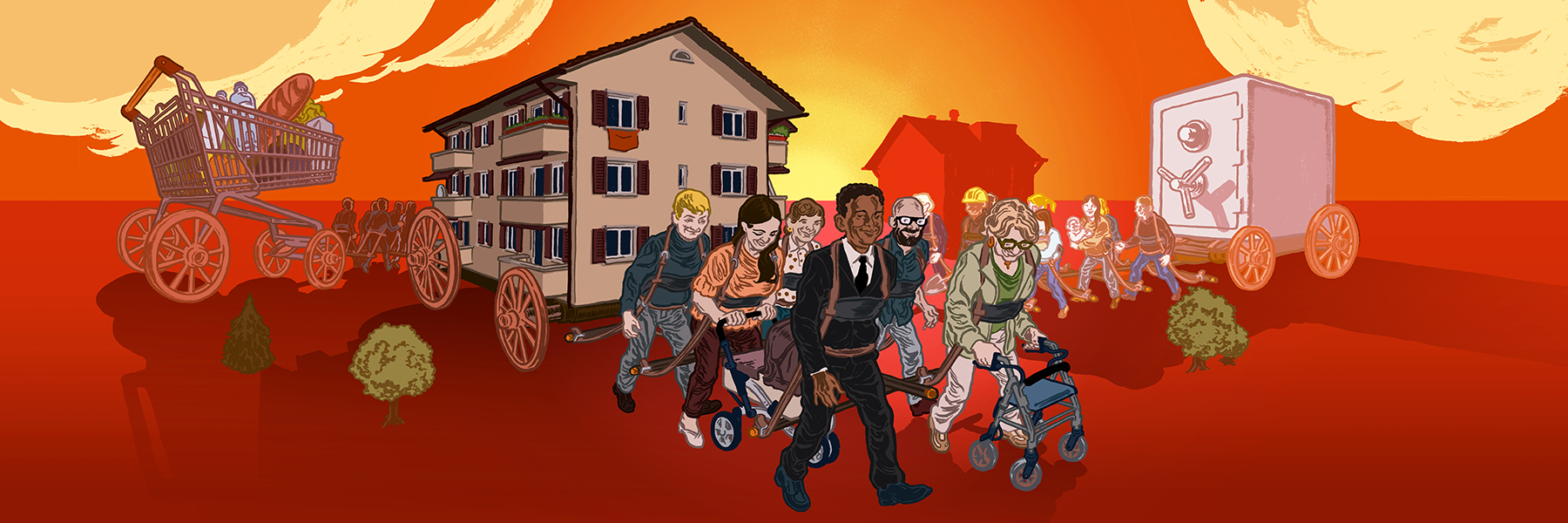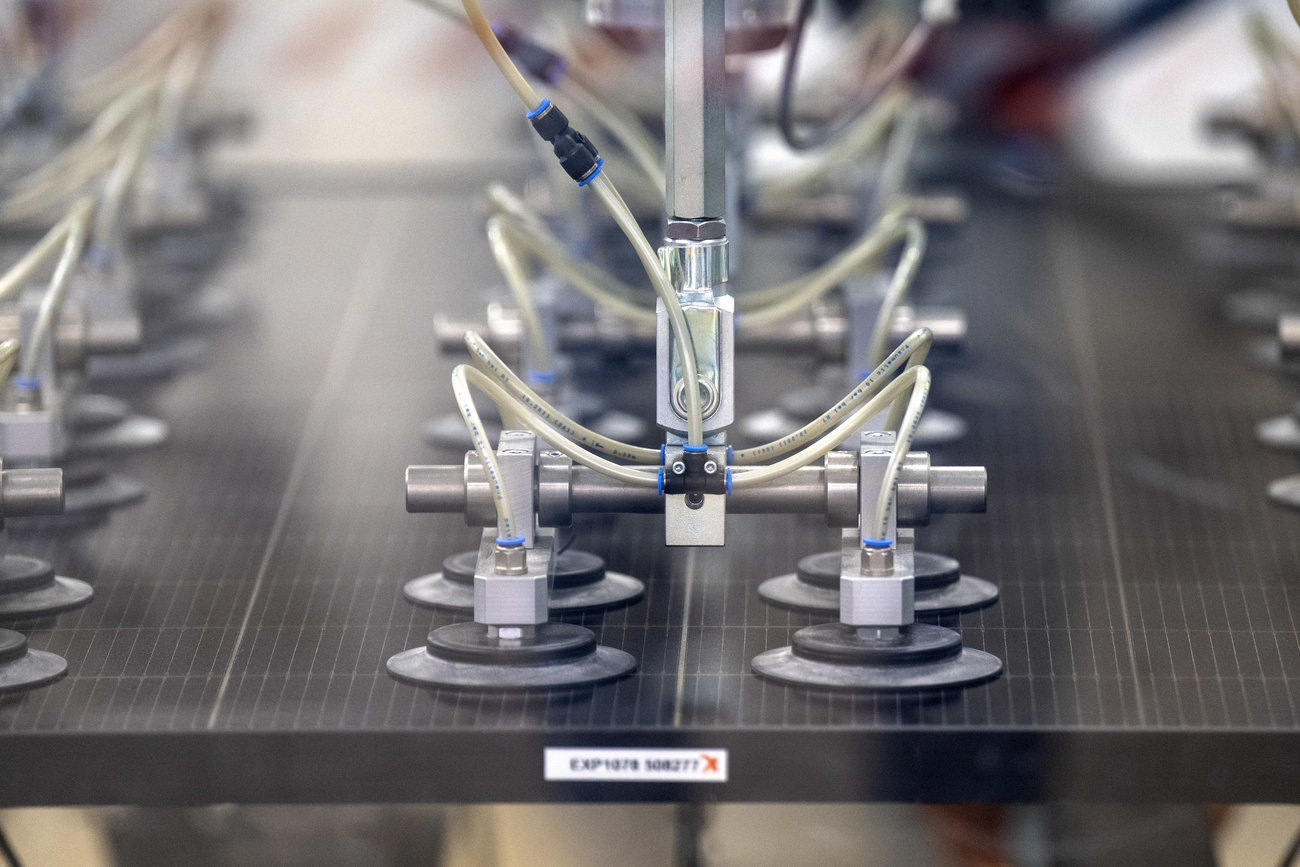
BSE still hard to control

Switzerland’s BSE unit says bovine spongiform encephalopathy, more commonly known as mad cow disease, is proving difficult to combat.
In its first report since it was set up one year ago, the unit says controls of animal feed are good, but that more rigorous practices are needed in the slaughter and disposal of animals and animal waste.
Switzerland was the first country on the European continent to register BSE in its cattle – prior to 1990, cases had only been discovered in the United Kingdom.
Throughout the 1990s different measures were put in place to try to control the disease, culminating in 2001 in a complete ban on animal products in feed for all livestock.
The BSE unit, which has 20 staff from the Federal Veterinary, Health, and Agriculture offices, was set up at the end of 2001. It is charged with ensuring that all measures to combat BSE are strictly followed.
From stable to table
The unit checks farms, abattoirs and animal waste disposal plants across Switzerland, in an attempt to make sure that the food chain is not contaminated with BSE.
Ulrich Kihm, head of Switzerland’s Federal Veterinary Office, says that in general controls are good, in particular with regard to animal feed, where feed containing animal products is down to 1.5 per cent of all samples tested, a reduction from 2.9 per cent in 2001.
“There we’ve had quite a nice improvement,” Kihm told swissinfo. “But it’s not down to zero yet, so we still have work to do.”
And overall the incidence of BSE in Swiss cattle is falling – in 2002, 24 cases were registered, compared with 42 in 2001.
Kihm believes these figures are primarily related to the ban on feed containing animal products, which is thought to be the main source of infection. An animal can contract BSE after eating as little as half a gram of contaminated feed.
Slaughter poses biggest risk
But Kihm remains concerned about lax procedures in the slaughter of animals, and in the disposal of animal waste.
“That is really the most difficult part of the process,” said Kihm. “And we need to improve matters.”
The BSE unit plans to support education and training of those working in the meat production industry, in an attempt to make sure that all the required procedures are properly followed.
But Kihm says there are no plans to introduce tougher measures for the slaughter of animals.
“The one real change we might like would be to stop the practice of splitting the vertebra,” Kihm said.
“Both Switzerland and Britain wanted that, but it is almost impossible. You would have to change the whole slaughter process, and it would have a major impact on the industry.”
The practice of splitting vertebra means that material from the spinal column, in which the BSE infection is usually present, can spread into the surrounding meat, which then has to be cleaned in a complicated and time-consuming process.
Still a mystery disease
But despite the falling incidences of BSE, scientists investigating the disease remain cautious.
The fact that there have been no cases in Switzerland of the human form of BSE – new variant Creuztfeld Jacob Disease – is not, says Kihm, a cause for complacency.
“The fact is we have no idea of the incubation time for new variant CJD,” Kihm explained. “It could be 20 or 30 years. It is positive that we have had no cases yet, but we certainly can’t exclude them in the future.”
Kihm expects that the ban on animal products in feed should lead to no new cases of BSE in cattle by around 2006, five years after the introduction of the ban.
But this will only be the case if the scientists are right, and feed is the only infection source.
“In fact,” said Kihm, “in 2003 we don’t know where we are. We are following the right curve, but we will only have achieved complete success when we register zero cases.”
swissinfo, Imogen Foulkes
BSE is caused by defective proteins known as “prions”.
It is one of a number of prion diseases that can jump the species barrier.
Such diseases are incurable and fatal and marked by the appearance of spongy areas of damage (“spongiform lesions”) in the brain.
The most common human form of the disease is CJD (Creutzfeld-Jacob Disease).
Switzerland was the first European country after Britain to register cases of BSE in its cattle.
Various measures have been introduced in Switzerland aimed at controlling the disease, the most recent being a complete ban on animal products in feed for livestock in 2001.
Incidences of BSE are falling; 42 were registered in 2001, and 24 in 2002.
There have been no cases of the human form of BSE, new variant Creuztfeld Jacob Disease, registered in Switzerland, but scientists do not exclude them in the future.
Switzerland’s BSE unit remains concerned that procedures for the slaughter of animals may not be being practised carefully enough.

In compliance with the JTI standards
More: SWI swissinfo.ch certified by the Journalism Trust Initiative




































You can find an overview of ongoing debates with our journalists here . Please join us!
If you want to start a conversation about a topic raised in this article or want to report factual errors, email us at english@swissinfo.ch.